So I calculated the Highpass stage output impedance to be 22kohm and the input impedance of the Lowpass stage is 430kohm when f=5khz, still in the output I am getting half of my supply voltage despite the input impedance of the second stage being much larger than the output impedance of the 1st stage, I even tried putting a buffer op-amp in between the two stages and that didn't change anything. other than the two impedance of the cascaded stages, what am I forgetting to consider ?
*Note that the bandpass is between 5khz and 5.5khz and on the oscilloscope it's 5v/div.
